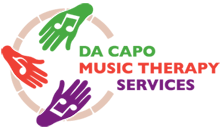This program is based on a specific method and techniques of receptive music therapy, emphasising listening to music instead of actively making music. The main aim of Regulative Music Therapy is to broaden and enrich the individuals’ perception skills and abilities, uncovering intra-psychic conflicts. Clients are exposed to pre-recorded pieces of music of various genres, and then asked to reflect on their listening experiences. On focus are psychoanalytical processes in the individual while listening to music, and how the individual deals with personal defence mechanisms.
Benefits:
- Enriching the Person’s Perception Skills & Abilities
- Uncovering & Handling Individual Defence Mechanisms
- Reducing Psychosomatic Symptoms
- Managing Anxiety
- Managing Pain
- Relaxation & Resolving of Physical Tensions
- Improving Quality of Life
This form of music therapy treatment is particularly suited for clients who predominantly have organ-specific illnesses, deficit understanding of psychogenic insight, or extreme defence mechanisms (e.g. personality disorders, psychosomatic disorders, development of secondary psychic disorders).
The therapeutic process begins with identifying and acknowledging any kind of perceptions coming up during the listening processes (thoughts, feelings, physical reactions & the music), increasing the client’s perception abilities. Initially, clients learn not to judge the arising perceptions (i.e., positive, negative, distressing, unimportant) and not to manipulate inner perception processes. Over time, clients will develop skills to switch between the different incoming perceptions (thoughts, feelings, physical reactions & the music), and discover how these processes are interrelated with each other. When listening to music, clients are confronted with accepted and non-accepted perceptions, and they will learn how to deal with unwanted perceptions.
Typically, the sessions are offered weekly for 45 minutes, and accommodated by one trained music therapist, with a maximum of 8-10 participants. However, this program could also be offered as weekend workshops. It can be run for individuals as well as for groups, and its duration is based on the progress made by participants. Clients are given exercises to continue with the program at home.

